All products featured are independently chosen by us. However, SoundGuys may receive a commission on orders placed through its retail links. See our ethics statement.
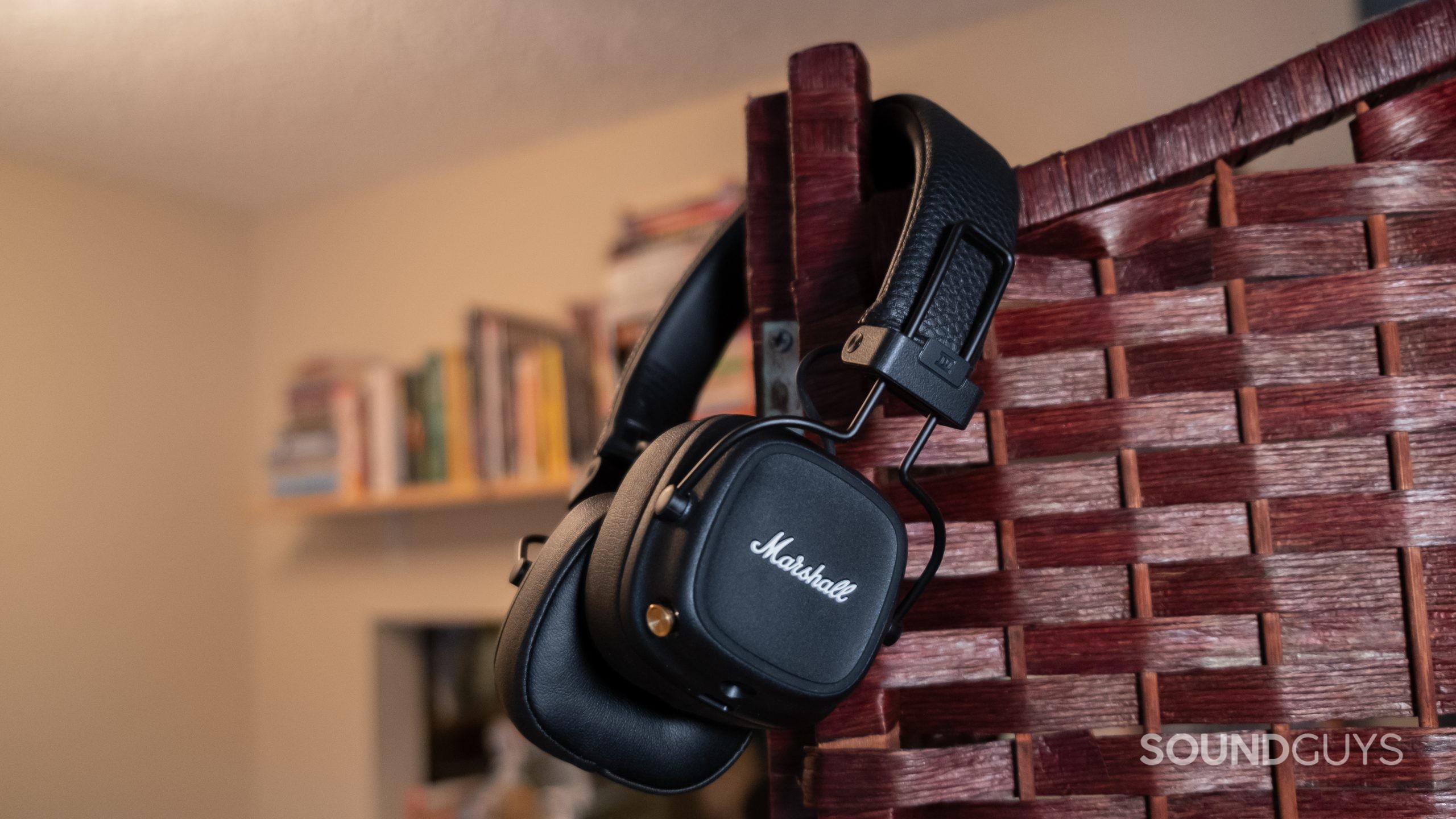
Marshall Major IV review
Published onMarch 14, 2025
Marshall Major IV
It’s hard to find many good on-ear headphones these days, having seemingly waned in popularity. As a format on-ears are lauded because of the small size, and disliked for unpredictable comfort and typically poor isolation. This fourth iteration in the Marshall Major series sees some small tweaks, focused on comfort. As a set of on-ears with Bluetooth or wired connectivity the Marshall Major IV promises versatility. Visually, it shares the same basic form as the last version, but let’s see if the fourth time is a charm with the Major IV.
- This review was updated on March 14, 2025, to update formatting.
- This review was updated on November 14, 2024, to add more microphone samples, and fix formatting.
- This review was published on March 3, 2023.
Anyone looking for lightweight headphones that prioritize ease of use over customization will like the no-fuss Major IV. People looking for on-ear headphones that don’t clamp hard can wear the Major IV comfortably. Fans of Marshall and its guitar heritage get the branding on the headphones.
What’s it like to use Marshall Major IV?
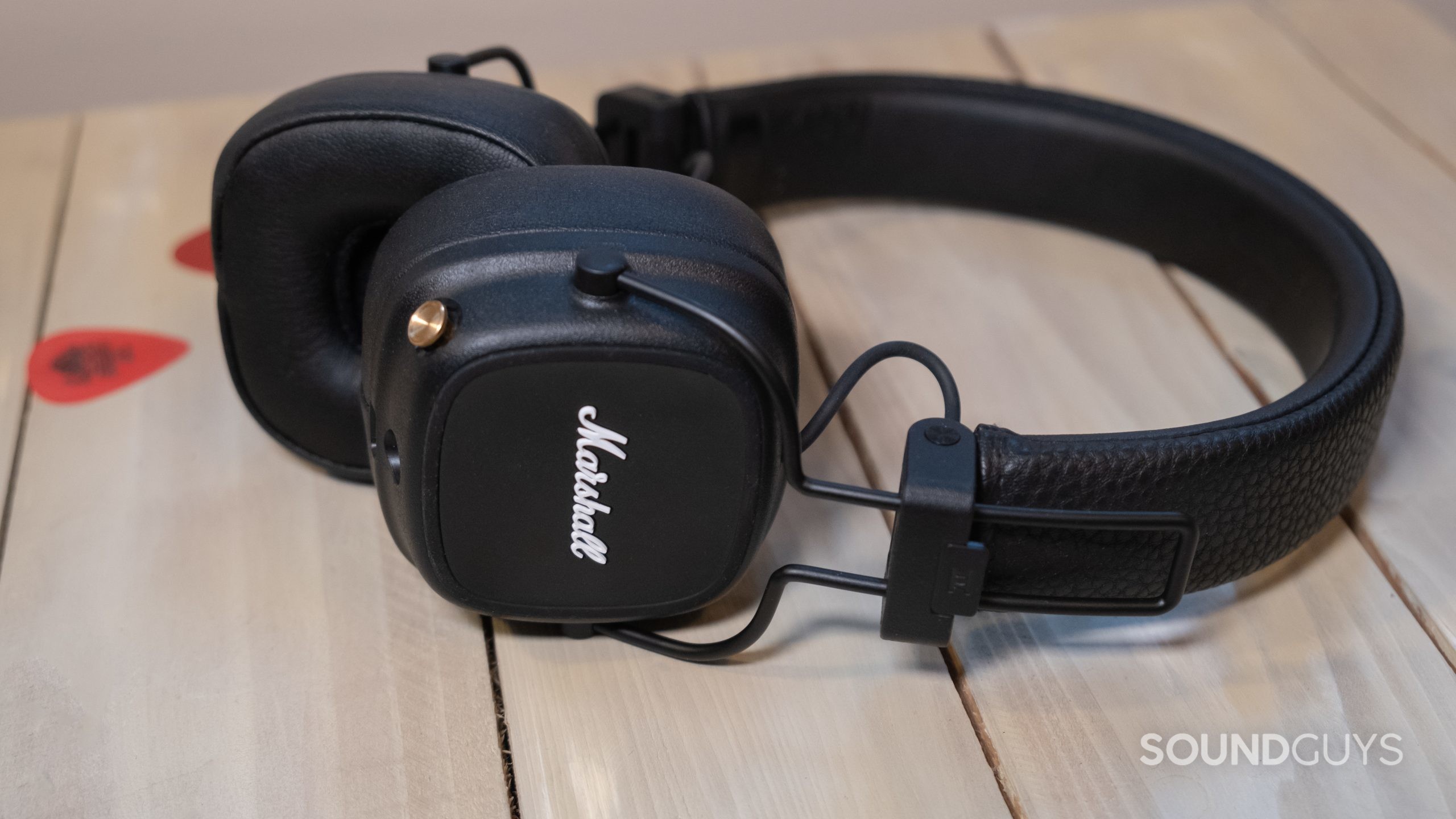
The Marshall Major IV looks heavier than it is. Removing it from the box it’s merely 165 grams, about 85 grams lighter than the hardly heavy Sony WH-1000XM5. Granted, the Major IV is a set of on-ears, rather than over-ear headphones, so it works within a smaller form factor. The earcups measure roughly 65mm from the top to the bottom of the pads, which rest against your ears.
For on-ear headphones, this is more comfortable than I expected, owing to three elements: a light, but not loose clamping force, a uniformly padded headband without pressure points, and plush cushioning ear pads. We still don’t recommend on-ear headphones if you wear glasses, but the Major IV feels way more comfortable than say, the Beats Solo3 Wireless.
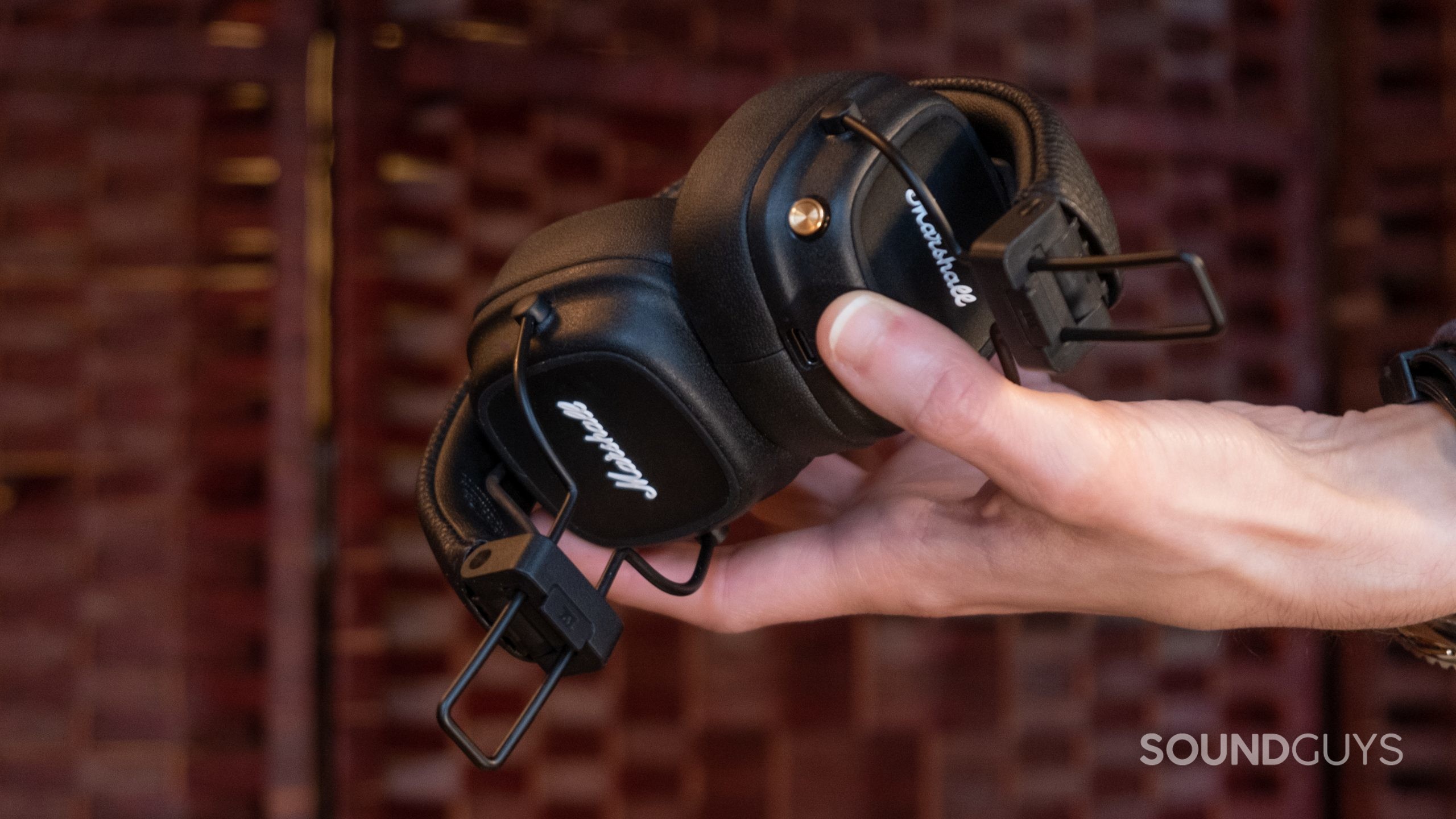
This is a compact set of headphones, and it folds down even further, which is rather nice for wireless on-the-go use. The ear cups lack lateral adjustment, but they can move on a vertical plane a lot, alongside articulating hinges to reduce the Major IV footprint when not in use. The ear cups are small enough that they mostly stay out of the way while slung around your neck. Absent from the Marshall Major IV package is a case or pouch.
Obviously, donning a set of Marshall branded headphones sends some signals to passersby. Some folks embrace the vintage aesthetic, but the Marshall headphones lineup has a polarizing look, especially among musicians or anybody with imposter syndrome. The Major IV seemingly has nothing really to do with actual Marshall amplifiers — the company licenses its brand to Zound Industries (the maker of Urbanears), and that’s who makes the Marshall headphones and earbuds. However, the Major IV does share some of the straightforward user interface of the classic amps by utilizing a single control and zero apps.
You can take your included headphone cable and tether it from the Marshall Major IV to a second set of headphones with a 3.5mm input to share audio. This unique feature allows you to receive Bluetooth audio with your Marshall Major IV and listen, while simultaneously sending an analog audio signal through the headphone cable to another device to output the audio.
If you get creative, you can use this fun feature for other things besides just listening to music with a friend. It also can solve a connectivity issue for times when you only have a Bluetooth connection, but you need a hardwired connection. It's one of the more intriguing capabilities of the Major IV.
How do you control Marshall Major IV?
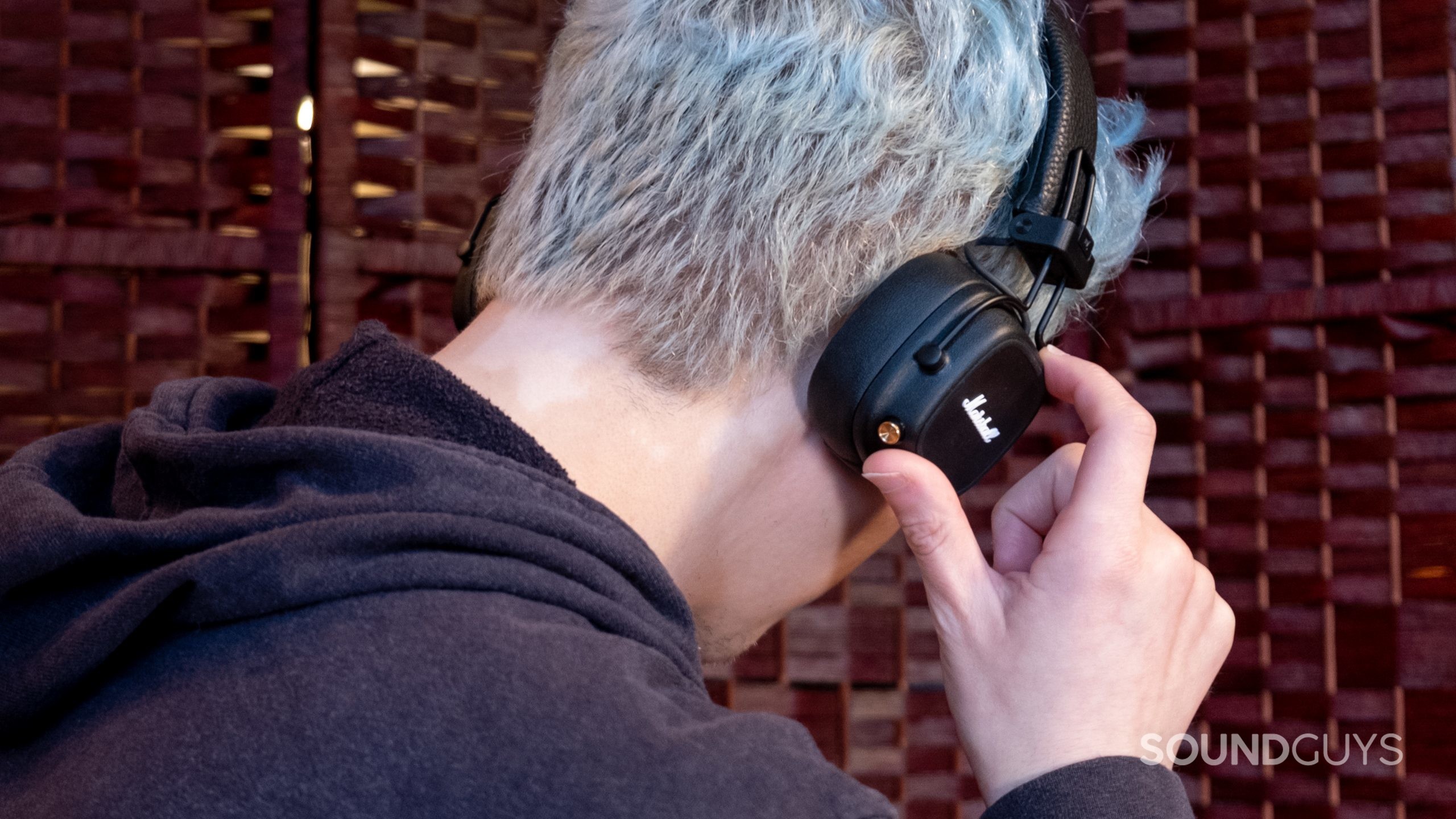
As an interesting alternative to the usual taps or dedicated function buttons, the Marshall Major IV implements a single multi-function button on the underside of the right ear cup. You can press it, and it uses directional pushes almost like a game controller’s joystick. The tactile feedback of pressing the prominent brass colored button is highly satisfying, as are the pleasant plucked guitar notes the headphones play to assure you that your commands register. It doesn’t make any noise for volume adjustments, which is wise.
| ACTION | PLAYBACK | CALL |
|---|---|---|
| ACTION ONE PRESS | PLAYBACK Play / Pause | CALL Answer call / End call |
| ACTION TWO PRESSES | PLAYBACK Voice assistant | CALL Reject incoming call |
| ACTION PRESS AND HOLD (2 seconds) | PLAYBACK Power on | CALL |
| ACTION PRESS AND HOLD (4 seconds) | PLAYBACK Bluetooth pairing | CALL |
| ACTION PUSH RIGHT OR LEFT | PLAYBACK Skip track forward / Skip track backward | CALL |
| ACTION PUSH FORWARD OR BACKWARD | PLAYBACK Increase volume / Decrease volume | CALL |
However, the orientation of the button’s directional push commands go opposite to my intuition and experience with other headphones. To turn down the volume, you push the button towards the front of the headphones, and to increase volume, you push the button towards the back. These motions seem like they should correspond to track skipping and not volume control. Major manufacturers like Sony and Google all use forward and backward swipes to apply to track skipping, for instance.
Of course, this control scheme isn’t necessarily wrong, it’s just unusual — it may very well feel more intuitive to some users. Besides that quirk of the interface, it’s surprisingly fun to use the Major IV multi-function button.
How does the Marshall Major IV connect?
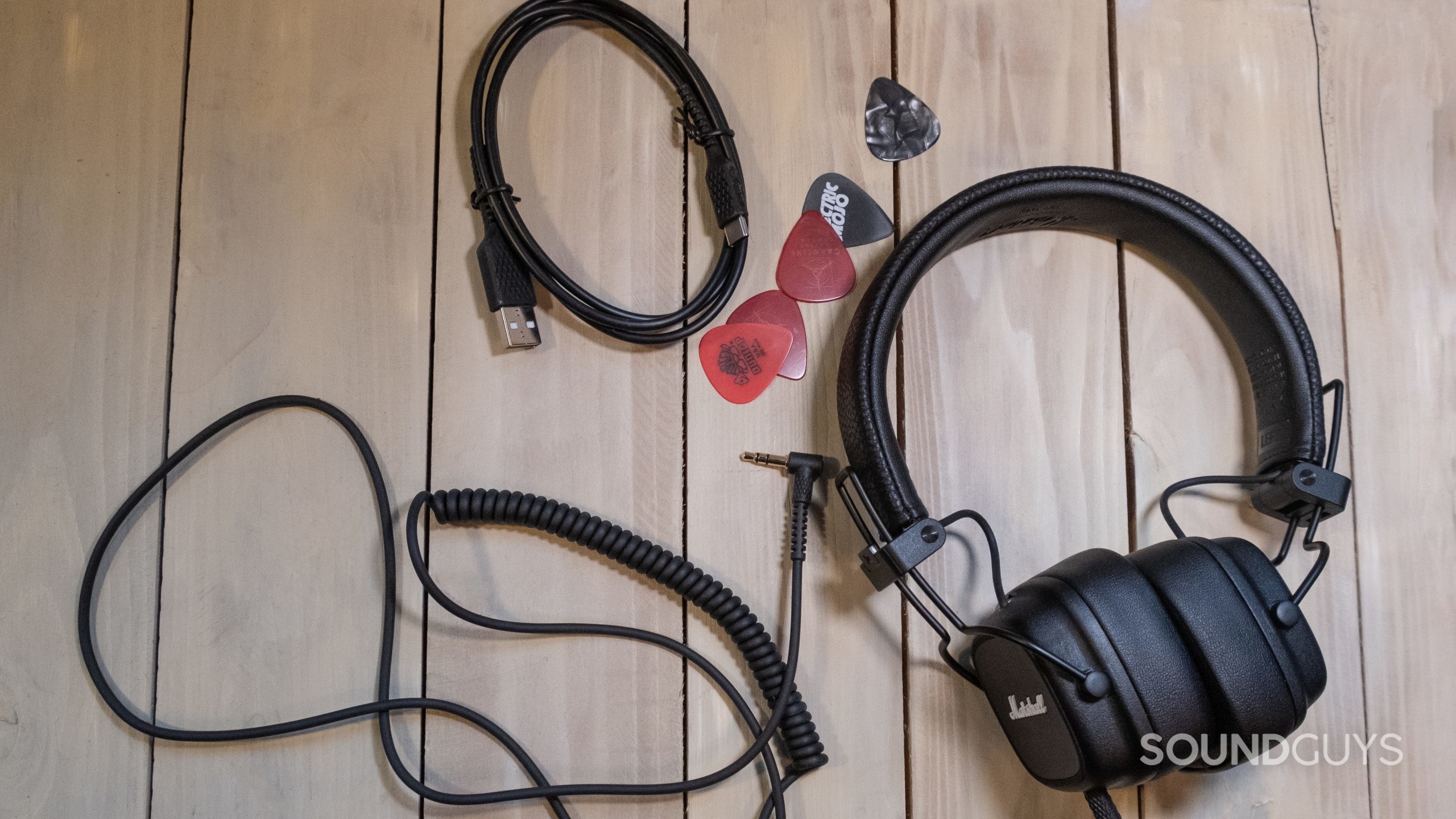
With the Marshall Major IV you get the choice of a 3.5mm headphone jack, or Bluetooth 5.0. In a nod to vintage instrument cables and very old headphones, the Major IV’s included audio cable is partly coiled (measuring roughly 1.3m when not stretched). The functional upsides of a coiled cable are that it expands and contracts length as needed, and it’s more difficult to get into a tangled web of knots.
Interestingly, despite using Bluetooth 5.0, the Marshall Major IV only has the lowest common denominator, the default SBC audio codec. This codec is adequate and the connection is stable, however it’s not ideal. If you use an iPhone, AAC is the gold standard, while Android users gain the most from higher quality codecs like aptX or LDAC. At this price point we expect at least AAC support. With that said, it re-pairs pretty quickly most times.
You can pair the Marshall Major IV by holding the button down for 4 seconds to enter pairing mode, but it's more cooperative when you pair it immediately as your turn on the headphones.
- Enable Bluetooth on your device.
- From powered off, press and hold the multi-function button for approximately 6 seconds. This both turns on the Major IV, and immediately initializes pairing mode.
- Once the indicator light blinks blue, release the button.
- Select the Marshall Major IV on your Bluetooth settings.
How long does the Marshall Major IV battery last?
Hold up! Something’s missing:
We’re still running the battery test for the Marshall Major IV, so we don’t have a battery score or expected playback time. Given that the listed estimate is 80 hours of playback time over wireless—it’s gonna take a while. Check back in a week or so and we’ll have better figures for you.
One of the interesting features found on the Major IV is wireless charging. If you have a Qi pad, simply rest the right ear cup’s outer housing on the pad to charge. While wireless charging seems less mystical than in the early days, it’s still a rarity in headphones. It also charges via USB-C with the included cable.
Yes, the Marshall Major IV has fast charging. A 15 minute charge yields an impressive 15 hours of audio.
How well does the Marshall Major IV block out noise?
Loading chart ...
Isolation is not really a strength of the Marshall Major IV, and that’s largely true for all on-ear designs. Like most passive isolating headphones, low frequency noises will reach your ears unencumbered. High pitched chatter gets partly muffled, however, it will still generally also get through.
While listening to music, background noise from the TV and the laundry dryer remain audible, albeit slightly muffled. This is expected given that the clamping force of the Marshall Major IV is pretty light, so the ear cushions are tasked with forming to your ear to make a seal to block noise — a tall order.
How does the Marshall Major IV sound?
Loading chart ...
Broadly, the Marshall Major IV has a consumer-style frequency response. It over amplifies bass and treble frequencies, with under-emphasis between roughly 250Hz and 800Hz compared to our headphone preference curve. This results in unduly loud cymbals and snares, and some added oomph in the low end. You won’t hear some instruments as well. Basically, it sounds okay, if a bit extreme on the poles of bass and treble.
Lows, mids, highs
Listening to Chance Encounters by Blues Lawyer with the Major IV sounds fine in terms of instrumentation. You can hear everything, but it’s reproduced with overly pronounced bass and treble, resulting in the bass guitar and kick drum playing rather loudly. However, the boosted volume in the highs also allows you to hear quietly mixed acoustic guitar. At the chorus, the lower pitched electric guitar is harder to hear, but you can still make it out. The Major IV works fine for rock music and not very busy arrangements.
Putting on NarciscO by Rina Mushonga offers a different challenge to the Major IV. Given that it’s a track with repeating parts you can hear the build up and how the introduction of layered parts shows some of the volume issues present in the frequency response of the headphones. When all instruments play in the track (once the layering is complete), the relatively loud bass and vocals are notable. The upper extension of the electric guitar is clearly audible too.
What gets a bit buried are the lower frequencies of Mushonga’s vocals, leaving a voice that sounds more shrill than it ought to. This, alongside the quieter lower notes of the keys during the first part of the song, and the quieter, lower pitched backing vocals illustrate the deficiencies in the frequency response. Essentially, treble this loud makes cymbals and other high pitched percussion fairly loud, but can lead to some listening fatigue, while the exaggerated bass volume feels unnecessary relative to the rest of the music.
No, the Marshall Major IV retains the same frequency response curve whether used wirelessly or turned on and plugged in with a headphone jack. If the headphones are turned off you can still use it with the 3.5mm connection, and it sounds basically the same too.
Can you use the Marshall Major IV for phone calls?
First of all, in ideal circumstances the Marshall Major IV sounds better than most mics found on headphones without dedicated booms. That its frequency response is largely flat from 100Hz up to 5kHz means both deeper and higher voices ought to sound reasonably accurate.
It's a shame the Marshall Major IV lacks better noise filtering, because the mic is otherwise one of its better features.
Where the Major IV microphone lets you down is in its subpar noise attenuation. In a busy office the mics capture basically everything from keystrokes to office kitchen clatter. Your voice still comes through clearly, but the person on the other end will hear all that background noise too. It goes much the same way under windy conditions, although, to the credit of the Major IV your voice never cuts out completely under assault of wind, but it does sound more muffled.
Marshall Major IV microphone demo (Ideal conditions):
Marshall Major IV microphone demo (Office conditions):
Marshall Major IV microphone demo (Street conditions):
Marshall Major IV microphone demo (Reverberant space):
Marshall Major IV microphone demo (Windy conditions):
How does the microphone sound to you?
Should you buy the Marshall Major IV?
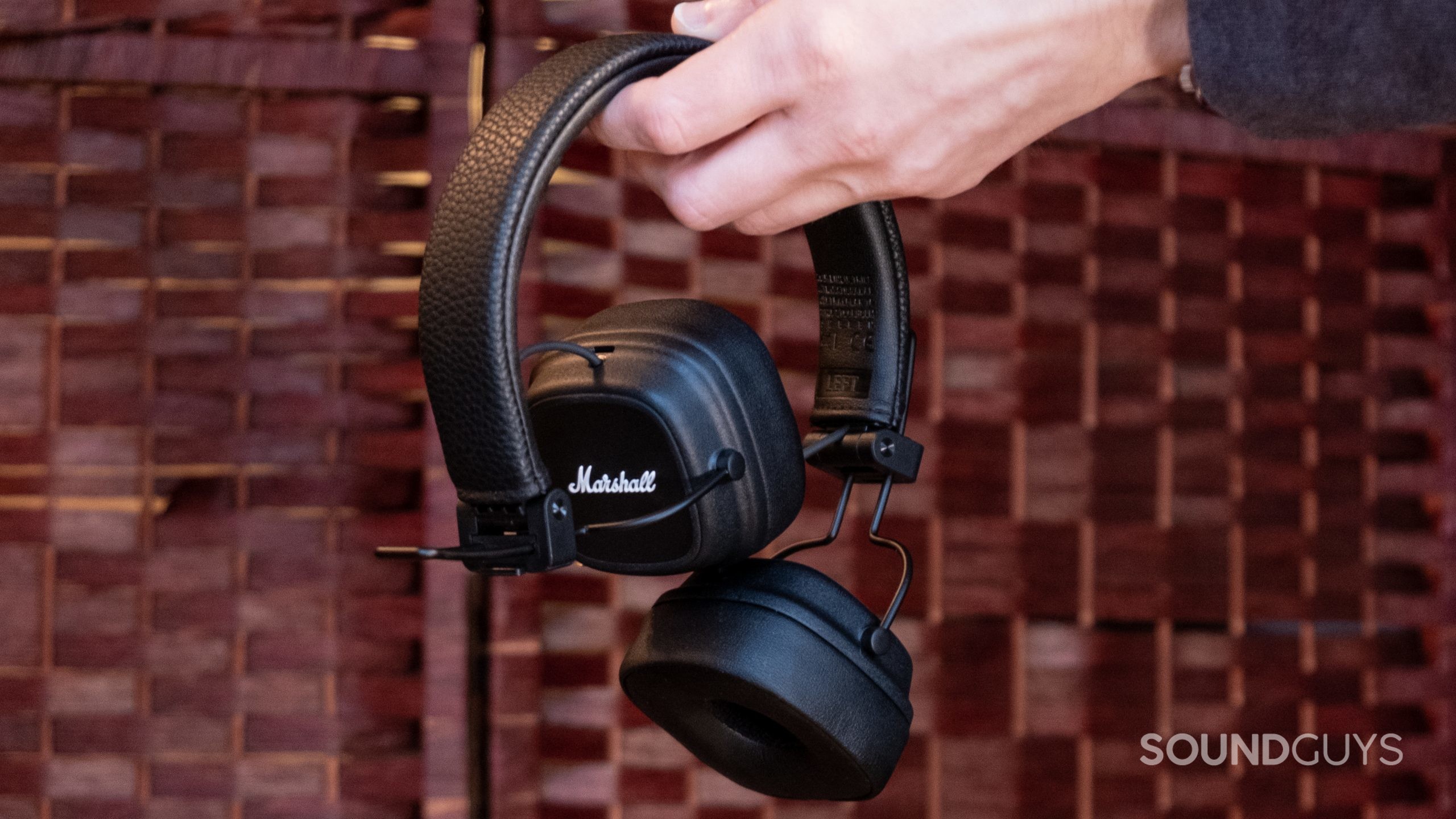
The Marshall Major IV shares quite a bit in common with its predecessor, but a key upgrade appears to be softer ear cushions. They make upgrading worth it. As a set of basic wired or wireless headphones the Major IV ticks most boxes by remaining easy to use, and fairly comfortable (at least, as on-ear headphones go).
The single button interface feels good to use, and the build quality is pretty nice. One upside of no app support is that you receive a finished product without giving up personal data, but you also don’t get any firmware updates or EQ. The Major IV could benefit from some equalizing.
Where the Major IV could do with some further attention is better Bluetooth codecs, because SBC just doesn’t cut it. Yes, you have the wired option so you don’t have to go without good audio, but it’s a bit of a misstep not to include other codecs. Without any additional noise canceling the Major IV was never going to block much noise. As a straightforward product with a substantial battery, it’s unique for on-ear headphones.

What should you get instead of the Marshall Major IV?
Disadvantages of the Marshall Major IV include its lack of noise canceling, sparse Bluetooth audio codec support, and sole frequency response. You could consider something else.
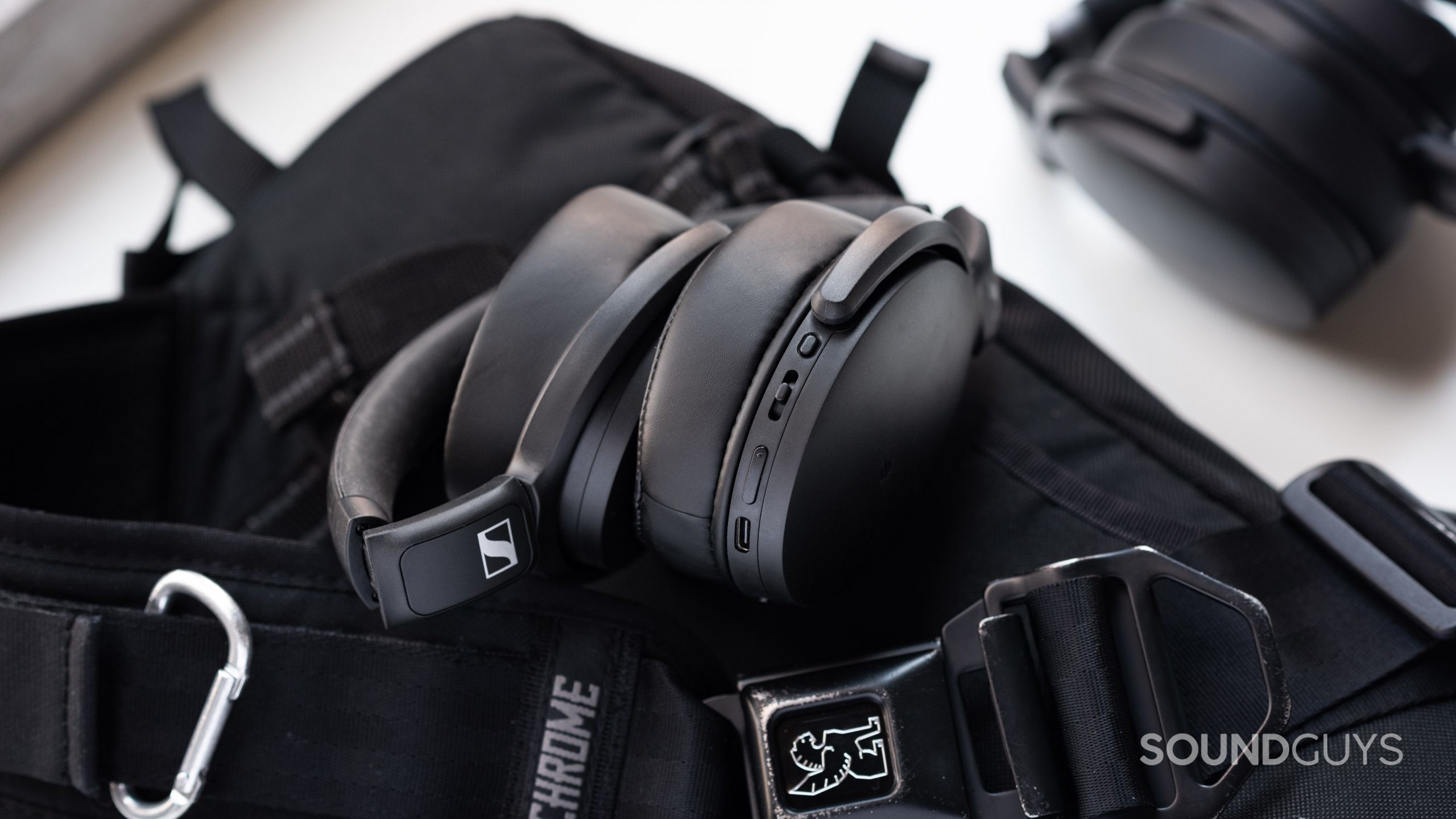
It’s getting on in years, but for the price of $86 at Amazon, the Sennheiser HD 350BT is a small form factor headset (it may feel like on-ear headphones for some) with better codecs. Even so, it boasts Bluetooth 5.0 SBC, AAC, aptX, and aptX Low Latency support. That’s great if you stream a lot of videos for diminishing latency concerns. You miss out on wired listening, however, but the sound will be less “hyped” than the Major IV. It also has an app to tune the headphones to your preferences.
If you just want some headphones for listening to music on the go, you can pick up the Audio-Technica ATH-M20xBT for $79 at Amazon. While the headphones do not fold down, you can listen wired or wirelessly (AAC, and SBC codecs), so it’s portable. Dedicated buttons per function keep things simple, and there isn’t any app support. As for frequency response, the ATH-M20xBT rolls off low end below 70Hz, but otherwise loosely follows our target curve.
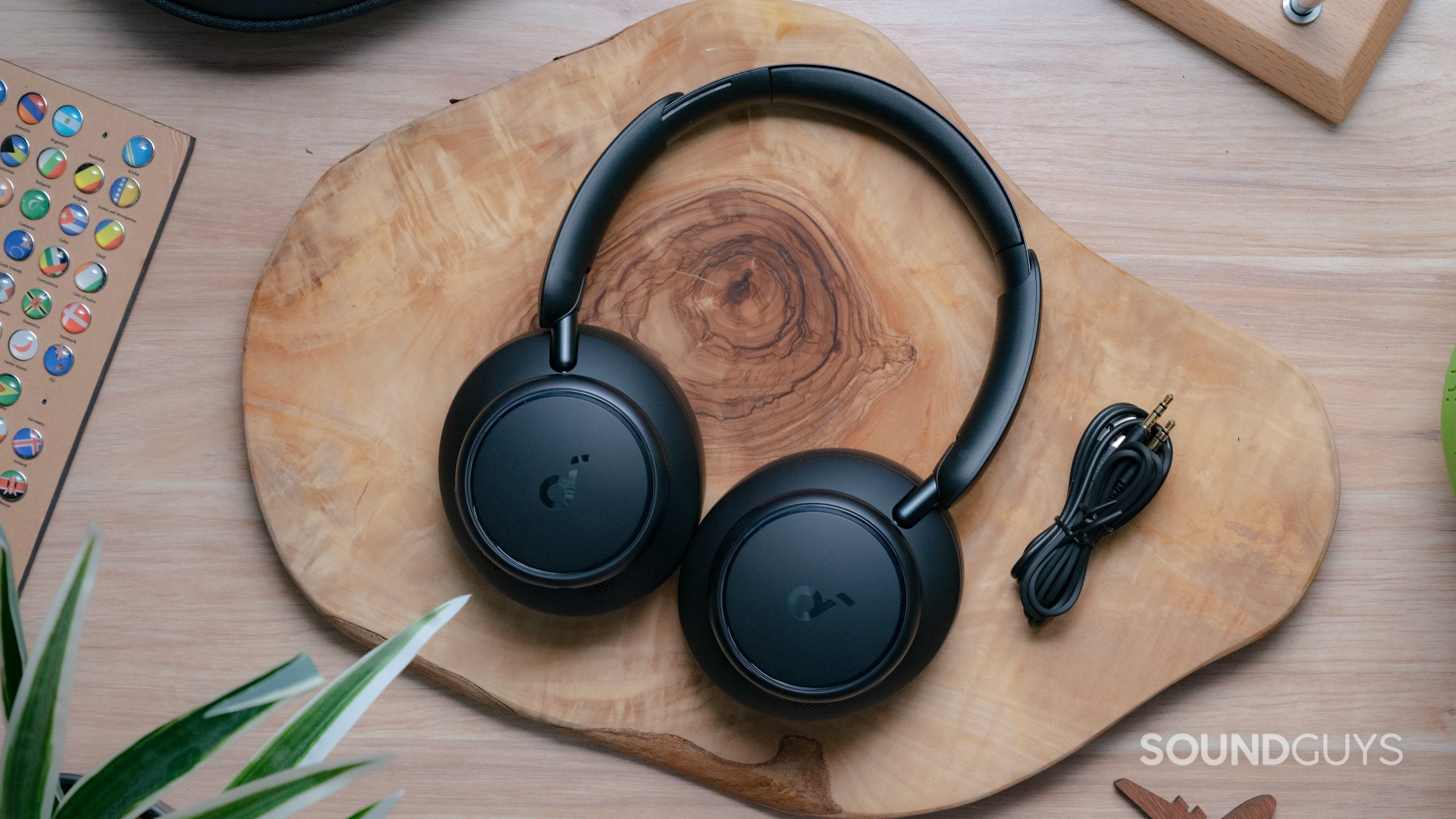
Nab some effective active noise canceling with the Anker Soundcore Space Q45. The headphones also have optionally wired or Bluetooth 5.3 (with SBC, AAC, and LDAC) for connectivity. By default the Soundcore Space Q45 doesn’t have the best frequency response, however, you can use the included equalizer to improve it. All in all, the Soundcore Space Q45 outperforms its price of $149 at Amazon.
Lastly, keeping you free from apps, there’s always the Monoprice BT-600ANC which sell for only $84.99 at Amazon. It has very impressive noise cancellation and the unusual (and welcomed) aptX HD codec, alongside SBC, AAC, and wired listening. Similar to the Marshall Major IV, the BT-600 ANC under-emphasizes middle frequencies.
Frequently asked questions
The Marshall Major IV does not have an IP rating, and is not waterproof.
Although USB-C headphones exist, they are pretty niche. The Marshall Major IV uses its USB-C connection strictly for charging the internal battery of the headphones. You cannot use it to listen to music.
Yes, you can listen on the Marshall Major IV even when the battery is dead as a passive, wired set of headphones.
No, the Marshall Major IV have a light clamping force and don't hurt your ears to wear. People with glasses or some ear piercings might find them less comfortable.
The Marshall Major IV are isolation-only headphones with no additional active noise canceling. They don't isolate particularly well, either.